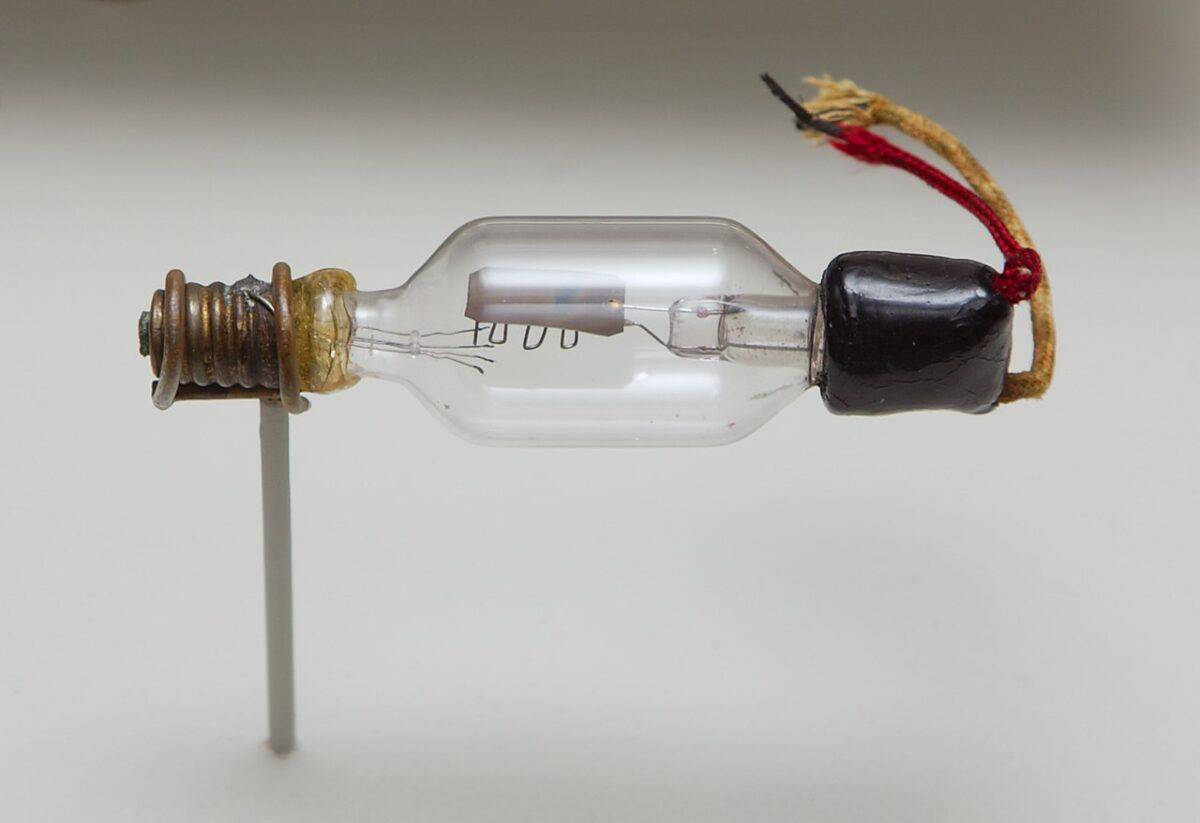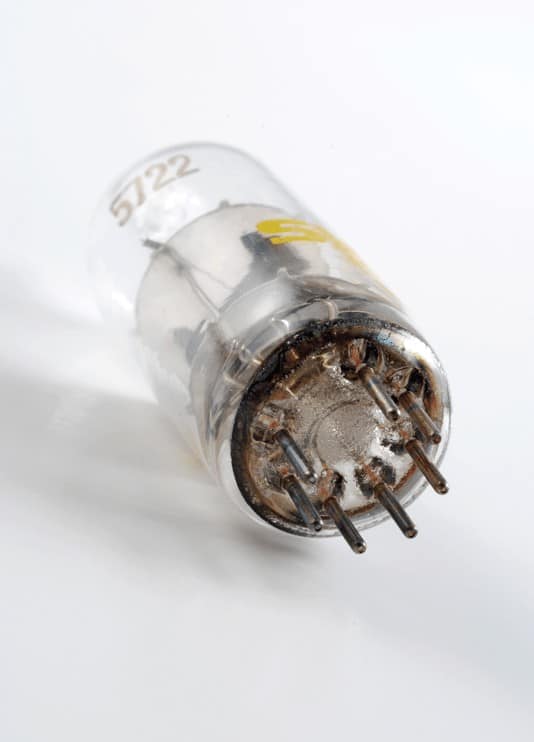
Key Points about Audion Vacuum Tube
- It was the original vacuum tube with a control grid among the anode plate and the cathode filament (in the shape of a bent wire).
- Lee De Forest adjusted the current between the filament and the plate using the control grid, resulting in the first functional electronic amplifier.
- Audion’s generic name fell out of favor with the introduction of multigrid tubes in the 1920s and was substituted with more descriptive terms.
Audion Vacuum Tube: History
Gas flames had been electrically conductive since about the middle of the nineteenth century, and early wireless researchers recognized that the existence of radio waves altered this conductivity. De Forest discovered that gas in a partial vacuum driven by a standard lamp filament reacted similarly. The device could be used as a radio signal detector if a wire were wrapped around the glass container.
The residual gas in Audion was higher than in succeeding vacuum tubes, limiting the dynamic range and giving the non-linear tube properties and unpredictable performance. Developed as a radio receiver detector by adding a grid electrode to the Fleming valve, it was hardly used until its amplifying ability was discovered by many researchers around 1912, who used it to make the first amplifying radio receivers and electronic oscillators. The various practical applications for amplification prompted rapid development, and the original Audion was quickly overtaken by improved models with higher vacuum levels within a few years.
Quick Facts
- Created
- 1906
- Creator (person)
- Dr. Lee De Forest
- Original Use
- The detection and amplification of weak radio signals.
- Cost
- N/A
A small metal plate was sealed within the lamp housing and connected to the positive terminal of a 22–volt battery via a pair of headphones. In his original design, the negative terminal was connected to one side of the lamp filament. Wireless signals delivered to the wire wrapped around the outside of the glass disrupted the current, causing noises to be heard through the headphones.
Patents protected existing wireless systems vigorously; a new detector would allow de Forest to market his system. In addition, he realized that connecting the antenna circuit to a third electrode positioned directly in the current space channel enhanced sensitivity; in his early versions, this was a piece of wire twisted into a gridiron shape (hence grid).
The Audion supplied power gain; the antenna circuit provided all the power to operate the headphones with prior detectors. As a result, weak transmitters might be heard from further away.
Lee De Forest (1873–1961) was a brilliant American inventor who received over 180 patents. He is credited with inventing the Audion, the first vacuum triode, a vacuum tube that amplifies electrical signals that are pretty weak. De Forest is considered one of the ancestors of the electronic age, as his Audion paved the way for widespread electronic use. He is also recognized as one of the essential inventions that enabled sound to be added to motion movies.
He was an American inventor, who was the radio and motion pictures forerunner. He acquired more than 300 patents throughout his life, the most significant of which was a three-electrode vacuum tube for the Audion or Triode.
Lee De Forest, the son of a minister, was born in Council Bluffs, Iowa, and received his Ph.D. in electrical engineering from Yale University in 1899. He was a controversial figure, as he was involved in several patent lawsuits and spent a massive portion of his income from his inventions on legal fees. He was defrauded by trading partners (and defrauded business partners himself), and he was once indicted for mail fraud but was later freed.
De Forest’s involvement in wireless telegraphy led to the development of the Audion (also known as the De Forest valve, and since 1919, the triode). It was created in 1905, and De Forest filed a patent for a diode vacuum tube sensor in January 1906. The Audion was a bulb with the identical components as the Fleming diode, except for an additional electrode, but De Forest always claimed he was unaware of the Fleming diode.

Audion Vacuum Tube: How It Worked
An incandescent light bulb with an extra plate contains the filament. Electrons are expelled from the filament’s surface into the vacuum inside the bulb when it is heated. The filament is encased in a plate toward which these electrons would travel. The electrode plate (anode) is cold while the filament (cathode) is hot. The electrons will be able to flow more freely because of this.
The temperature difference between the hot cathode and the cool anode is the primary idea underlying these tubes’ function.
A bent wire was added between the filament and the plate within the glass bulb in the latest vacuum tube advancements by Lee De Forest in 1907. The ‘Grid Electrode’ was the name given to this device. Because an increase or reduction in the voltage supplied to the grid generated an increase or decrease in the number of electrons flowing toward the plate, Audion used the grid to control the current going to the plate. The ‘Audion’ was the name given to Lee De Forest’s creation. Later, he created a three-electrode version of the Audion. The ‘Triode’ was the name given to this gadget.
Audion Vacuum Tube: Historical Significance
Lee De Forest designed the Audion, and it was a vacuum tube device that could magnify a small electrical signal into a bigger one. The Audion was used in everything from radios to televisions to the earliest computers, and it enabled AT&T to establish coast-to-coast phone service.

On November 13, 1906, De Forest received a patent for his early two-electrode Audion, while the triode version was patented in 1908. A grid-regulated current from the filament to the plate in this precursor of the triode. A tiny amount of electricity sent to the grid could control a more extensive current from the filament to the plate, allowing the Audion to detect and amplify radio signals.
De Forest’s Audion, on the other hand, differs from a real vacuum triode in that it lacks linear amplification, not to mention the semiconductor transistor, which is a fundamental component of every electronic computer. As a result, Lee de Forest regarded his triode as little more than a more sensitive diode detector. Edwin Armstrong was the first to notice that a triode may be used as an amplifier in 1911.
The image featured at the top of this post is ©Albert Lozano/Shutterstock.com.